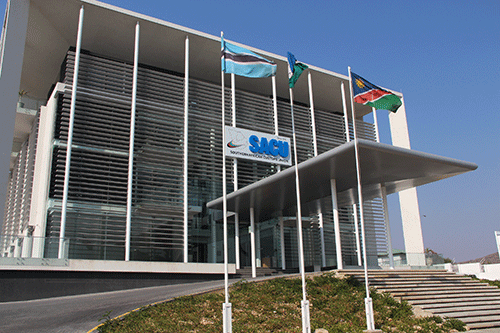Namibia’s current account balance worsened to a deficit of N$6.4 billion compared to a lower deficit of N$315 million in the corresponding quarter of 2020 and N$3.1 billion a quarter ago.
These figures were released by the Bank of Namibia (BoN) in its quarterly bulletin last month.
A country’s current account records the value of exports and imports of both goods and services and international transfers of capital. The annual and quarterly deterioration in the current account balance was supported by a lower surplus on the secondary income account as well as larger deficits in merchandise trade and on the primary income and services account.
“On an annual basis, the lower surplus on the secondary income account was prompted by a significant fall in SACU receipts. The annual and quarterly widening of the merchandise trade deficit was due to imports that rose at a faster pace relative to exports. Higher dividend payments to foreign shareholders supported the larger deficit in the primary income account on an annual and quarterly basis,” reads the bulletin.
Finance minister Iipumbu Shiimi during the 2020/2021 budget statement, stated revenue for the year was projected at N$51.4 billion, of which N$22.3 billion was to be anchored by SACU receipts, this is about 43% of total revenue.
Meanwhile, the bank stated the payment by the government of Namibia to settle the Air Namibia aircraft lease agreements contributed to the larger deficit on the services account, both on an annual and quarterly basis.
As a percentage of gross domestic product (GDP), the current account deficit increased to 14.3% from 0.7% and 7.3% in the corresponding quarter of 2020 and the previous quarter, respectively.
Furthermore, the debt stock of the central government rose over the year to the end of September 2021: “The total government debt stock stood at N$126.1 billion at the end of September 2021, representing a yearly and quarterly increase of 18.3% and 6.1%”.
The increases on a yearly basis were driven by a rise in the issuance of both Treasury Bills (TBs) and Internal Registered Stock (IRS), coupled with the disbursement of an IMF loan and supplemental financing from the African Development Bank (AfDB) to finance the budget deficit.
Total debt as a percentage of GDP stood at 67% at the end of September 2021, representing yearly and quarterly increases of 11.5 percentage points and 6.1 percentage points, respectively.
Going forward, BoN anticipated total debt stock to rise to a high level of 74.1% of GDP in 2023/24 but then edge lower in the final year of the Medium-Term Expenditure Framework (MTEF) period. While the relentless upward trend in the debt-to-GDP ratio is set to be stemmed at that time, both the present and projected future values of the ratio breach the SADC benchmark of 60% of GDP.


